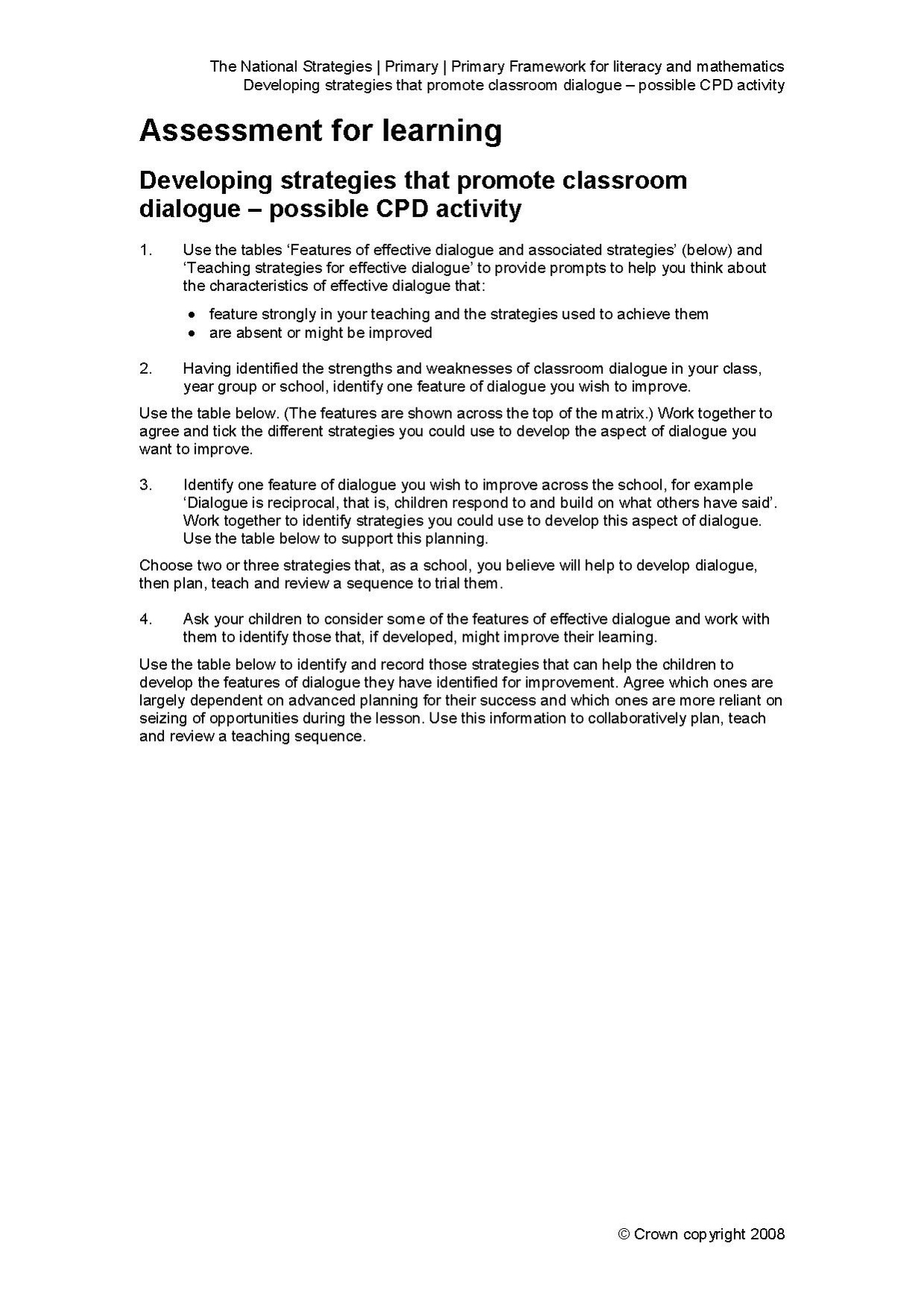AfL and Dialogue: Difference between revisions
From OER in Education
SimonKnight (talk | contribs) No edit summary |
No edit summary |
||
| (3 intermediate revisions by 2 users not shown) | |||
| Line 1: | Line 1: | ||
<noinclude>{{ORBITreading}}</noinclude> | |||
<noinclude> This resource is available to download as a pdf [[File:AfL and Dialogue.pdf]], or in editable form as a .doc [[File:AfL and Dialogue. | |||
<noinclude> | |||
This resource is available to download as a pdf [[File:AfL and Dialogue.pdf]], or in editable form as a .doc [[File:AfL and Dialogue.doc]]. It is in an (edited) wiki form below. | |||
</noinclude> | |||
'''Assessment for learning ''' | '''Assessment for learning ''' | ||
Latest revision as of 17:58, 6 February 2015
- Aspects Of Engagement
- Assessment Overview
- Assessment for Learning Introduction
- Assessment for Learning Research Summary
- Building Capacity in School
- Classroom Management - Thinking Point
- Creating Engagement
- Developing Higher Order Scientific Enquiry Skills
- Developing Your Teaching
- Factors Affecting Lesson Design
- Fibonacci Project
- Group Talk - Benefits for Science Teaching
- Group Work - Practical Considerations
- Group Work - Research Summary
- Improving Reading - Research Summary
- Improving Writing - Research Summary
- Inclusive Teaching in Mathematics
- Inclusive Teaching in Science
- Modelling Introduction
- Purposes and characteristics of whole-class dialogue
- Questioning Research Summary
- Speaking and Listening in Group Work
- TESSA Working With Teachers
- Teaching Learning Developing Approaches to CPD
- Teaching Learning and Whole School Improvement
- The Importance of Speaking and Listening
- The Process of Lesson Design
- The educational value of dialogic talk in whole-class dialogue
- The impact of enquiry-based science teaching on students' attitudes and achievement
- Types Of Question
- Using Digital Video in Professional Development
- Whole Class Work - Research Summary
This resource is available to download as a pdf  , or in editable form as a .doc File:AfL and Dialogue.doc. It is in an (edited) wiki form below.
, or in editable form as a .doc File:AfL and Dialogue.doc. It is in an (edited) wiki form below.
Assessment for learning
Developing strategies that promote classroom dialogue
Use the table below - 'Features of effective dialogue and associated strategies' and our assessment and dialogue resources to provide prompts to help you think about the characteristics of effective dialogue that
- feature strongly in your teaching and the strategies used to achieve them
- are absent or might be improved
| Teacher Strategies | Everyone is engaged with the dialogue | Teacher talk does not over-dominate the dialogue | Pattern of dialogue is 'basketball' rather pingpong | Dialogue is reciprocal, that is, children respond to and build on what others have said | Children's contributions are well- developed sentences or phrases | Children are willing to take risks by sharing partial understanding | Children are willing to challenge each other's ideas in a constructive way | Children demonstrate higher levels of thinking | Children reprocess their thinking as a result of dialogue |
| Rich questions | |||||||||
| Big questions | |||||||||
| Higher-order thinking questions | |||||||||
| Questions linked to resources or tasks | |||||||||
| Peer discussion following a question | |||||||||
| Wait time after a teacher question | |||||||||
| Wait time after a child's response | |||||||||
| Varying length of wait time | |||||||||
| No-hands-up questioning | |||||||||
| Pausing to survey | |||||||||
| Eavesdropping on group dialogue | |||||||||
| Cue in children using gestures and | |||||||||
| Model prompts and body language to encourage continuation | |||||||||
| Acknowledge where children demonstrate effective dialogue | |||||||||
| Group Work Strategies | |||||||||
This resource is licenced under an Open Government Licence (OGL).
